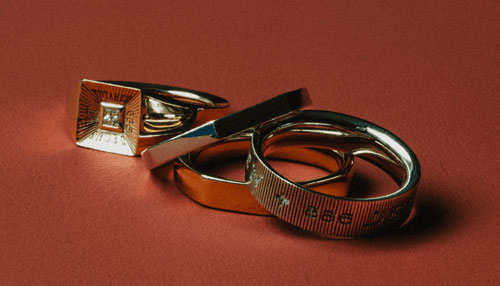Jewelry's Odder Adventures
This issue of JII has a little light relief. In general, gems and minerals are mined, made into jewelry, the jewelry is bought, and it's worn happily ever after. But sometimes jewelry has other adventures along its way from earth's depth to body enhancement.
Here are a few of those tales.
Royal Mint transforms itself
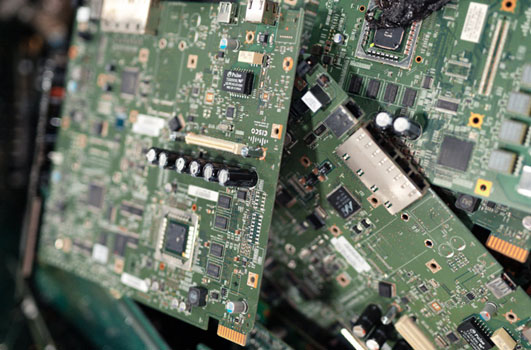
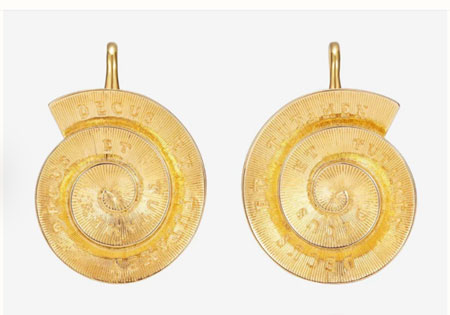 Gold from circuit boards becomes earrings
Gold from circuit boards becomes earrings(Jewelry photos from 886 Royal Mint website)
Britain's Royal Mint has produced coins for more than a thousand years. But since Britain, like our own country, increasingly relies on electronic transactions, there is much less need for coinage. So the Mint has taken on a new role: recovering precious metals from electronic waste and turning it into jewelry.
Small circuit boards with visibly high gold content are sent to the Mint's chemical plant to have the gold removed. A complex but relatively fast process produces powdered gold, worth $8,405 for 100 grams (about 3.5 ounces). The powder is made into gold nuggets, refined to 99.9% purity, and eventually made into jewelry right there on the Mint's premises.
Iron, copper, nickel and other minerals are extracted in large sorting machines and sold to metal markets. The rest of the e-waste, shredded down, can be sold to construction companies for building material.
In partnership with a UK company, the Mint can now extract silver from tons of medical X-ray film that has been stored at considerable cost to save it from landfill. All of this waste can now become jewelry.
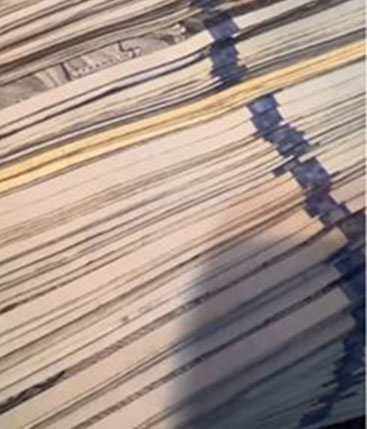 "Robbery gang" brags on Instagram
"Robbery gang" brags on Instagram
The new brand is called 886 after the year the Mint first produced coins, giving the jewelry a patriotic cachet for Brits. And since there's no shortage of electronic waste, buyers know that this jewelry is ethically and sustainably sourced.
Two Ooops Awards
Probably we all have done something we regret afterwards, something that had unfortunate consequences which we should have foreseen. In this example, a small smash-and-grab group got away with $2.7 million worth of goods from a jewelry store. However, one of the thieves dropped his phone at the crime scene. Another member bragged about the haul on Instagram and posted pictures of jewelry and of stacks of bills, along with the text "robbery gang." The culprits were tracked down pretty quickly.
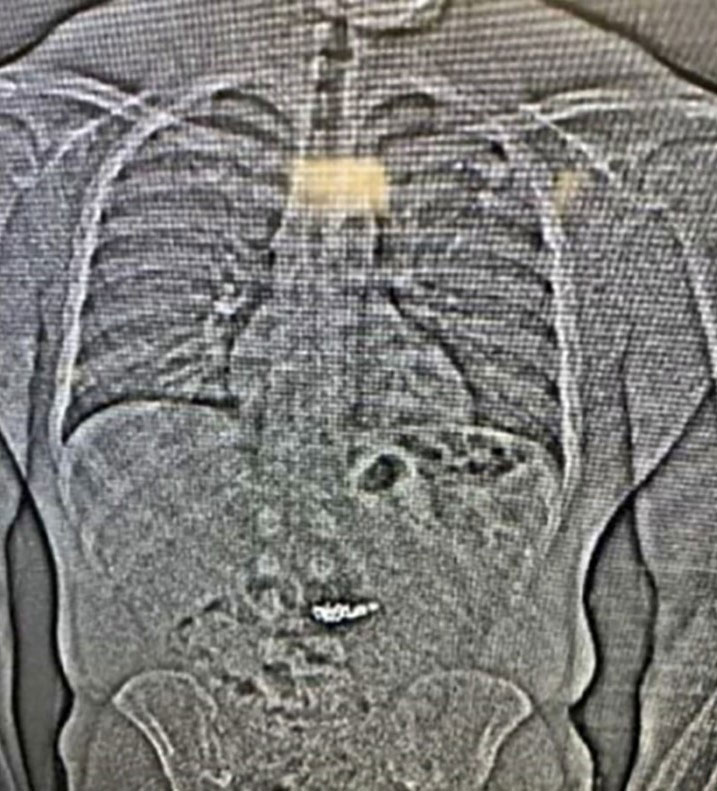 Thief swallows the evidence
Thief swallows the evidence
Then there was the Tiffany & Co. customer who was carefully examining earrings worth $769,000, when he suddenly stood up and ran off with the jewelry. As he was being chased by police, he swallowed the evidence. In the squad car, a state trooper heard the suspect saying to himself, "I should have thrown them out the window."
Police released an X-ray image that appeared to show a foreign object in the suspect's abdomen. While in jail, as authorities waited for the earrings to be "recovered," he asked, "Am I going to be charged with what's in my stomach?" He was.
Not the purchase but the perk
 Buy the house, get a free ring
Buy the house, get a free ring
For most people, $30,000 would count as a major purchase. In one situation, it was just an enticement. A jeweler in Australia put her house up for sale. The house, listed as a luxury 5-bedroom home, was expected to bring $678,000.
Along with advertising the property, she offered a free 6-carat diamond ring, valued at $30,000, to whoever purchased the house. She called it "a goodwill gesture to the buyer."
Regardless of the jewelry's adventures along the way, good practice for insurers remains the same:
All scheduled jewelry should have an appraisal. The best appraisal includes the JISO 78/79 form and is written by a qualified gemologist (GG, FGA+, or equivalent), preferably one who has additional insurance appraisal training. One course offering such additional training is the Certified Insurance Appraiser™ (CIA) course of the Jewelry Insurance Appraisal Institute.
All diamonds of one carat or more should have a report from a respected independent grading lab. We recommend the following labs and suggest you use these links to verify reports you receive.
GIA Report Check
AGS Report Verification
GCAL Certificate Search
Always ask for the sales receipt, as it is a check against inflated valuations. A sales receipt tells you the purchase price, which is generally a good indication of market value.
The counterfeiting of name-brand jewelry, like the 886 brand mentioned above, is a flourishing business. The purchaser should have documents attesting to the jewelry's authenticity, as well as a sales receipt that carries the retailer's name and contact information.
Base the settlement on descriptive information from the appraisal and lab report, not on the valuation.
On a damage claim, ALWAYS have the jewelry examined in a gem lab that has reasonable equipment for the job and is operated by a trained gemologist (GG, FGA+ or equivalent), preferably one who has additional insurance appraisal training, such as a Certified Insurance Appraiser™.
Comparing purchase price to the appraisal valuation is a useful way to avoid overpayment, as the price is usually a truer indication of market value than a possibly inflated valuation.
©2000-2025, JCRS Inland Marine Solutions, Inc. All Rights Reserved. www.jcrs.com

